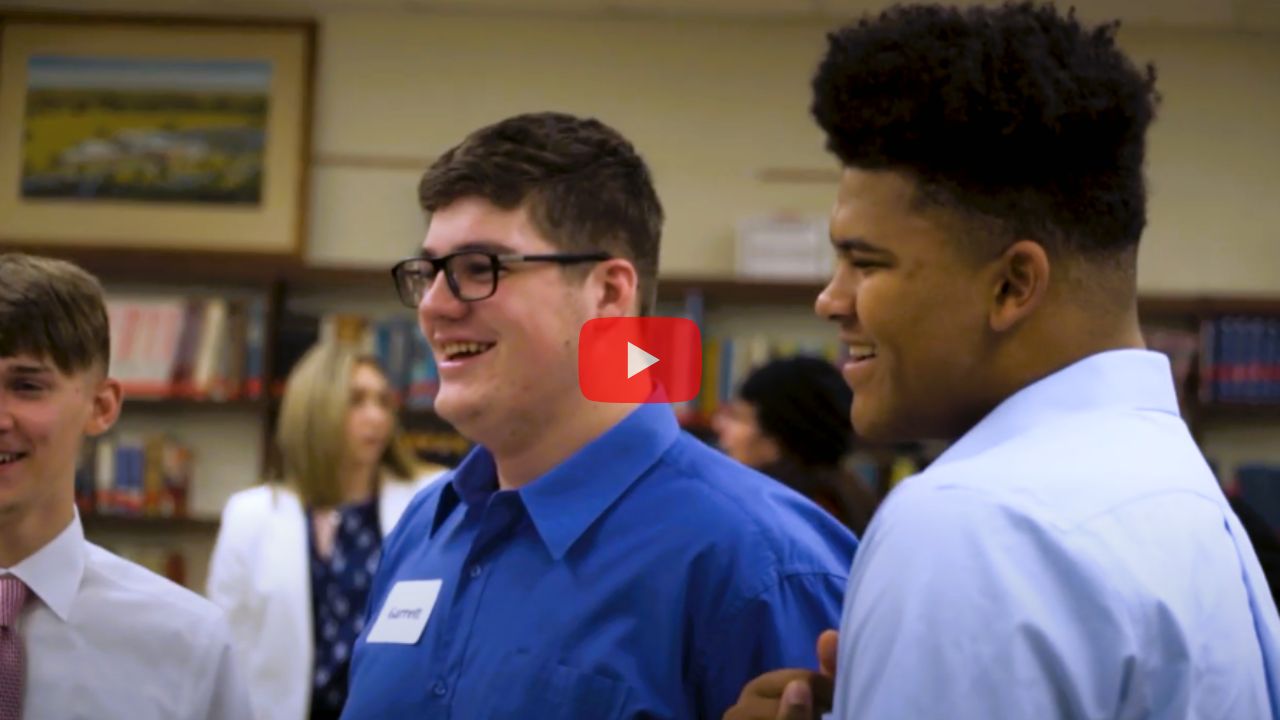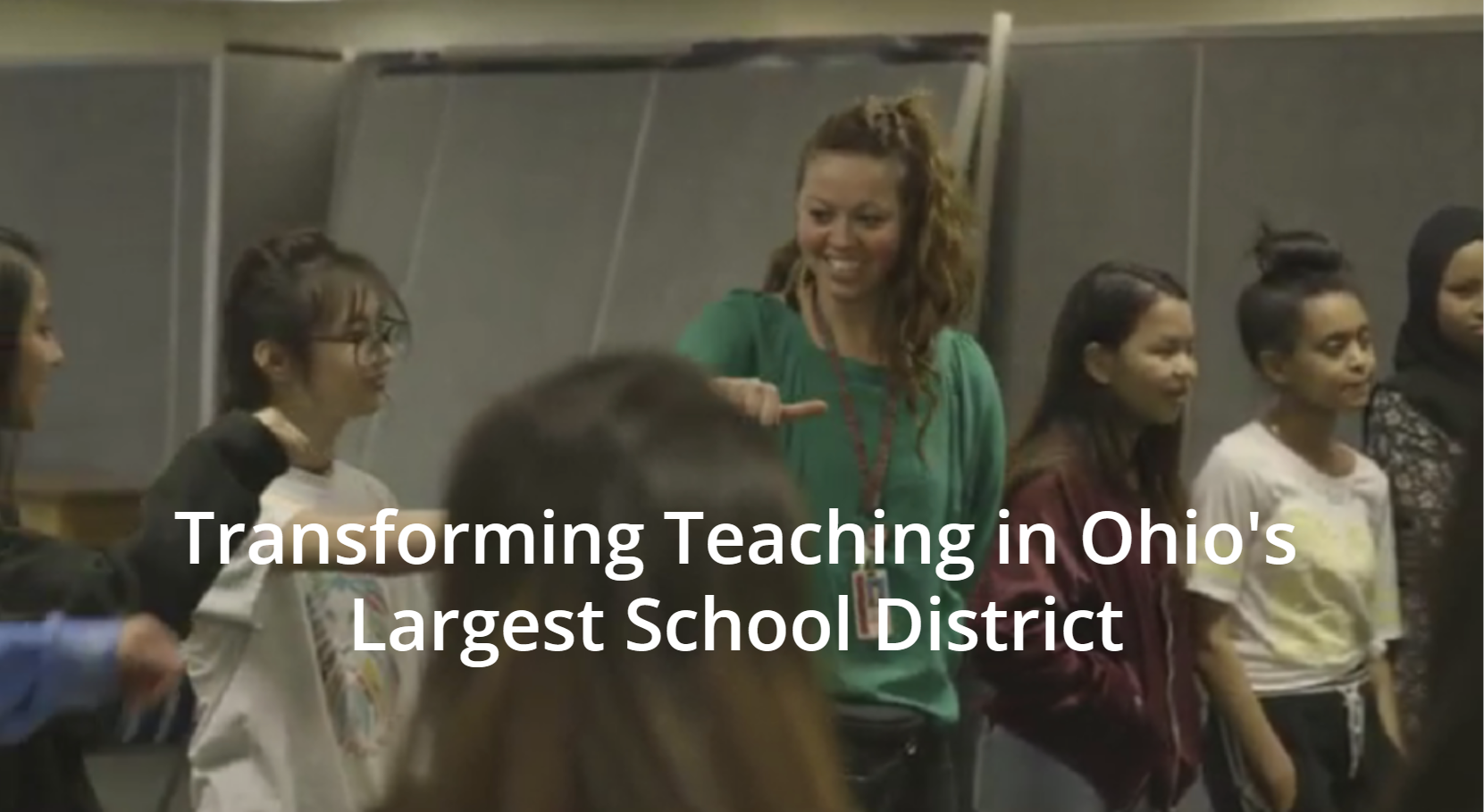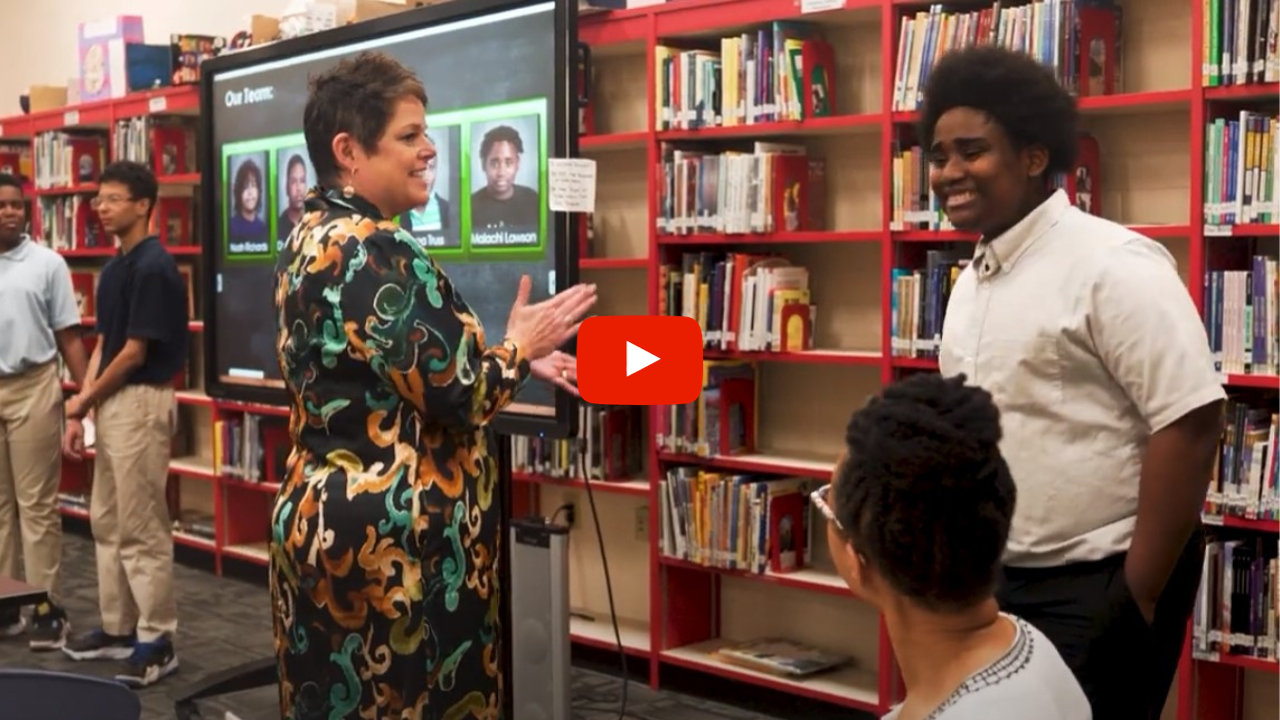In this episode, Doris speaks with Jeremy Wickenheiser, Founder and Director of Entrepreneurial Studies at DSST Public Schools. He shares his journey from teaching high school science four years ago to building an entrepreneurship program that has scaled across the large network of urban schools in Denver, Colorado.
Do School Better: A Podcast for People Who Want to Transform Education - Listen to more episodes here
Doris: Hello, Jeremy.
Jeremy: Hi, Doris.
Doris: I am so excited for this conversation, I met you four years ago. You were a science teacher. I’d like you to introduce yourself, and your program, now that you’re the Director of Entrepreneurial Studies.
Jeremy: Sure. My name is Jeremy Wickenheiser and I currently at DSST Public Schools, which a public chatter network located in Denver, Colorado. We currently have 13 schools of mix up middle schools, and high schools, serving approximately 5,300 students. And the Entrepreneurial Studies program we built and designed is currently being implemented in two high schools, one middle school in our network in the school-based that’s approximately 600 students. And we also have different kind of summer programming for both, you know, current students, alumni. And then we have kind of capstone experience that involved international travel and those kinds of pieces.
And then we’re also increasingly starting to work with the educators actually within our network to bring this kind of learning into their kind of core content classes, if you will. Because a lot of what we do is actually, I believe, is very much of framework of learning that can be applied to any sort of content that it just so happens that we’re using entrepreneurship as a vehicle to deliver these critical skills. But you can very easily do that in your statistics class or your biology class, or what-have-you. And we’re increasingly working with teachers in our network to do so.
Doris: Phenomenal. I’d love for our listeners to hear a bit about you, Jeremy, and about why you do this. Why are you so passionate about this?
Jeremy: Right. So, I grew up in a really small town in Northern California, went to UC Santa Barbara, where I got a degree in creative studies with an emphasis in biology. Then I went ahead and joined Teach for America, taught on the U.S.-Mexico border in South Texas, four years. And then came up to DSST Public Schools here in Denver, Colorado, where I currently teach. And DSST Public Schools is a charter network that was founded in 2004, built on the idea of, how do we create inclusive schools that, you know, foster, I would say, diversity or also providing a high-quality liberal arts focused, STEM-focused education that all students can access while emphasizing values as well.
So, my path, in terms of teaching was since I studied biology in college, I taught a lot of different science courses, built a solar car engineering program. And then when I came to DSST, I started at our first high school and taught biology and what would be the equivalent of an AP biology course. And then I helped to open our second high school where I taught physics for the first two years, then I looped up and taught AP biology, and regular biology with our students. And then kind of that’s the time when we kind of started to foray into this space of entrepreneurial studies.
And so, you know, for me I started to really, think could be a vehicle for developing these critical skills if, you will, because, you know, one of the things that I see in terms of education is, I think it’s about finding an equal balance between academic and support and competencies. But then also at the same time to giving students the space and time to both ask and answer the questions, you know, things like, “What I’m I put on this earth to do? Like what is my why? What is it that I care so deeply about?”
Because, I think, especially when you look at young people today, I would say, more so than any time previously, they care super deeply about finding a career where they find meaning and purpose in that, more than just collecting a pay check. And, I think, then that’s where…That, you know, became for me kind of my mission and purpose, you know, is in that way, right? To help young people today. I would say, find their talents and gifts and help them think about how they’re going to uniquely use that to create the deepest impact that they can.
Doris: I love the way you said that. So, what has this meant for the students at DSST?
Jeremy: So one of the things that DSST has done since it’s opened is 100% of our students have been accepted in four year universities. You know, but we know that, you know, that’s not enough. It’s not enough just to be…I think some people say, “That’s enough.” But it’s not enough just to be accepted to college. Right now, I would say, our network is really shifted in terms of how we think about that and it’s, you know, much more so about, how do we actually help all of our students to be able to graduate from college.
And, you know, I’ve had the opportunity to have conversations with people all over the city, and, I would say in terms of education, and then also in terms of higher education, and I’m thinking, you know, in the business communities. And, I think, there’s a couple of things that really stick out. You know, first, I think, the reality is, there’s a really big disconnect between K-12, higher ed and then the business community in the sense that when you look statistically, there’s data out there that says, “94% of the Chief Academic Officers from universities believe that they’re doing a good job, preparing students for careers post-college. But then on the flip side of it, only 11% of CEOs and hiring managers believe that to be true.” And that’s like a massive gap, right? And so that’s confirmed. I mean, when I talk to people they’ll tell me time and time again like, “Yes, you know, students even after coming out of college have all these academic content. Maybe they took, you know, a degree in computer science, whatever and they have all this content, but then all of these other skill components that kind of wrap around it. You know, this critical skills, you know, like resilience, and collaboration, and problem-solving, they may not have those kinds of pieces because the system hasn’t been designed to kind of give them those skills.”
And so, that’s kind of why we started making the shift of, okay, well, if we’re going to deeply invest in helping and, I would say, supporting really, so all of our students who want to go to college, be able to graduate from college, we have to go ahead and give them the skills to do so. And it’s not just the academics skills, right? But also all these other skills that wrap around it. Because when we look across the country today, the reality is that less than 60% of students actually graduate college in six years. And if you’re a first generation or a low-income student, you have a 9% chance of graduating college in six years.
But at the same time, we know that diverse teams or better teams in every sense of, you know, the word. And so, we have to do a better job of making sure that all students can kind of access that path, which is why we’ve gone ahead and made this re-orientation.
Doris: Absolutely. And I won’t even call it soft skills because that diminishes what we’re talking about here. It’s so interesting that we do that in the education system. We, privilege that you learn how to differentiate an equation and then we say, “Oh, and isn’t it nice? Let’s create a program over there.” Maybe it’s a sport that you’re in or maybe it’s a STEM class or robotics, or some other thing over there where you learn things like, how to work with other people well. And how to communicate effectively, and how to problem solve when there’s no answer in the back of the book.
And we call those soft skills, when in fact, anyone who’s been out of school for five minutes knows what we now have research to support, which is what makes you successful in work and in life is more based on your ability to do these things, others will call soft skills and I won’t, to be able to work well with others and be adaptable and flexible and resilient and handle failure well, and pick yourself back up and all of those things are the things that will mostly determine your success in work and in life. And even your happiness in living in a social world at much more so than your ability to take a part of sentence with grammatical…Like, it’s crazy, what we do.
Jeremy: Right. I mean, these are the…I think of them like critical skills, because I don’t think…They’re definitely not soft skills. They’re harder to learn, in all sorts of the words. I also don’t really like necessarily like the term 21st century skills because they’re skills for every century, if you will, right? So I really think about them, as I would say, the critical skills because, I think, they’re critically important.
Doris: Yes, I completely agree. And it’s time for us to throw out the 19th century model and acknowledge that these are actually core academic skills. And put the responsibility of schools for giving students learning experiences over the course of their childhood where they’re not only going to learn how to learn really hard stuff like statistics and mathematics and grammar, but they also, at the same time, must have the opportunity to develop these skills in school so that they’re really ready and prepared to be successful in the world they’re going out into.
We have to call this academic, and we have to change what we call rigorous academics to include developing skills like this.
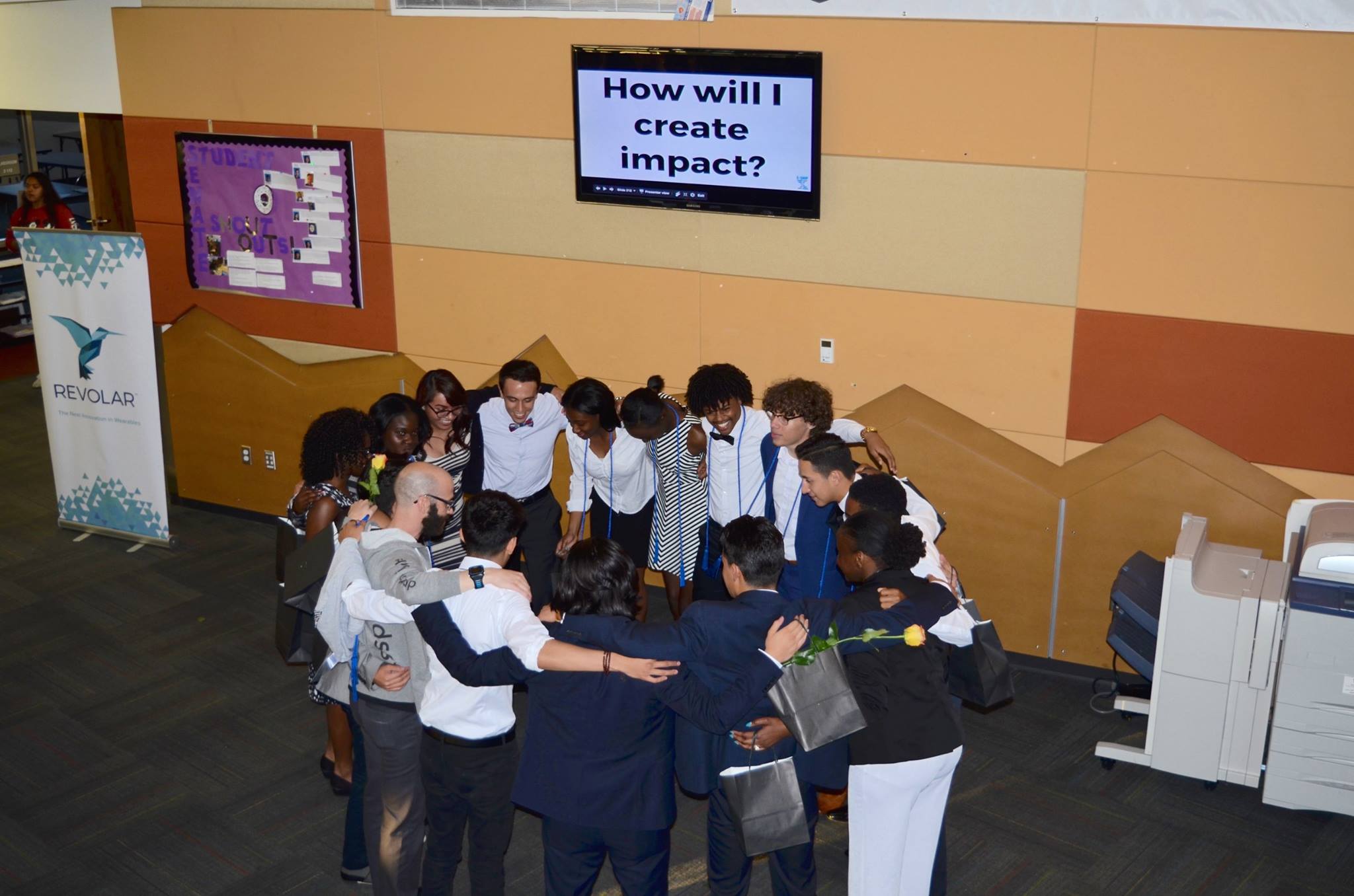
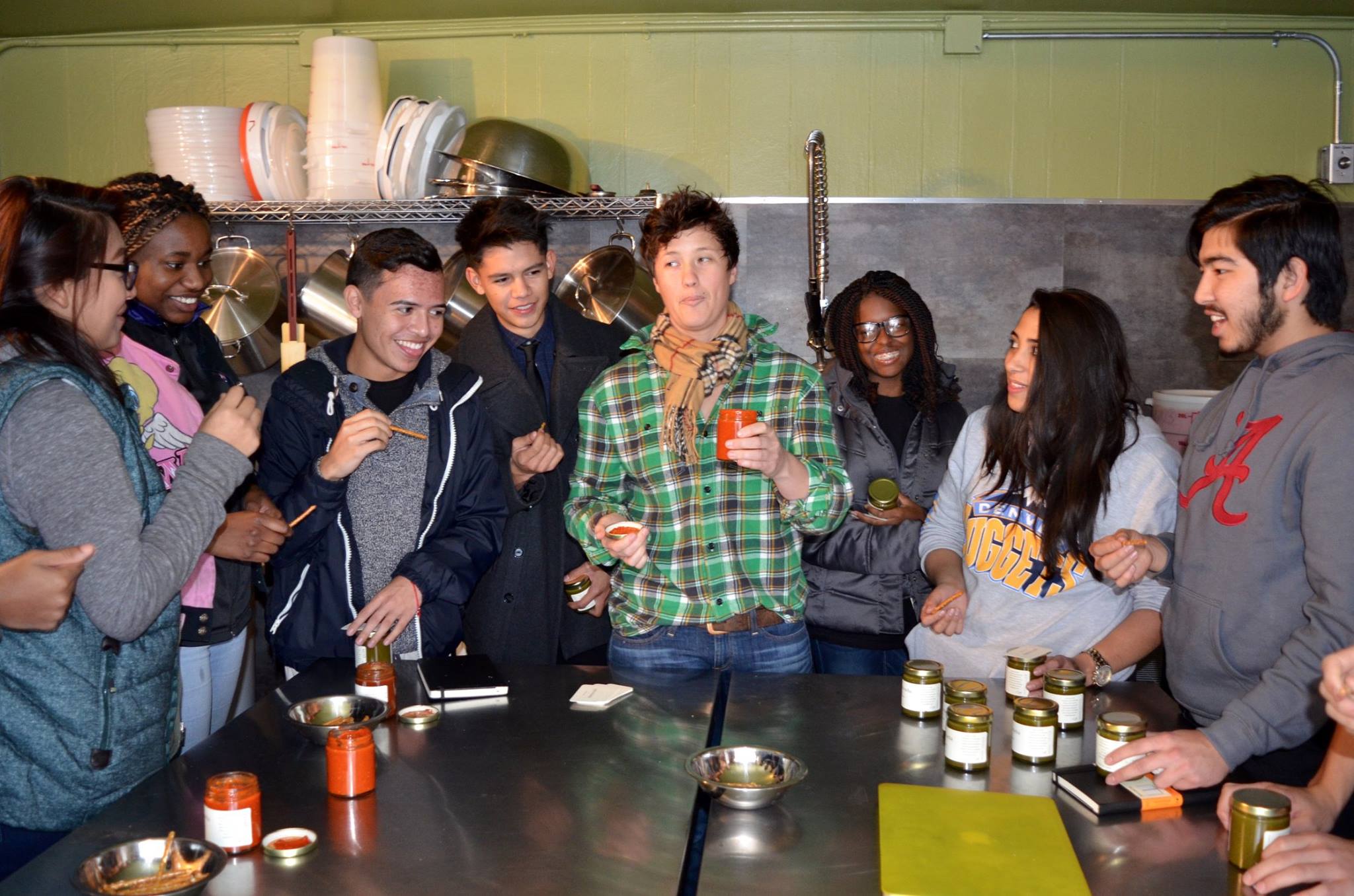
Jeremy: Yeah.
Doris: Okay, and I want to hear how it started and what happened. I remember you were coming to me around four years ago, you were an AP science teacher, and your school head decided let’s try an entrepreneurship class, and you were going to do some, sort of, an entrepreneurship class as an academic class for your seniors, came to the workshop. What happened?
Jeremy: So, right after that workshop. I think, that was actually a big shift for us, in terms of, okay, we saw that this works, you know, after school, now, I think, the next logical step is…You know, then we believed, I would say, in inclusivity and access, and when things happen after school or have to happen after school, and on the weekend, that isn’t inclusive, and that is not accessible to all students. And so that isn’t right.
And so, very much if we believe that this is an opportunity that all kids should have, which I do believe that it is, then let’s take it into the school day. So we started very small, which is the senior intensive course that had, I think, 11 students actually, two trimesters long, you know, built around the same ideas of solving real problems for real stakeholders. And for us, you know, the program that I built has been always been framed kind of around two big of overarching questions.
The first is, “Who I’m I?” and then the second is, you know, “How will I create impact in the world?”
Doris: Yes, and I’m going to actually interrupt you here because, this is really important as people understand. This isn’t about business and money making. Entrepreneurship, for me, is about training ideas into successful, repeatable realities. And, you know, when you think about that broadly, it applies to a lot of things, which is kind of what you’re saying.
Jeremy: Right. Because as we think about entrepreneurship, we’re not…You know, the way that we say it is…This isn’t about the next software startup. We’re not training students, you know, to be the next, you know, startup CEOs. There will be a small fraction that do that, may be 1%. Because we get asked a lot, you know, “So the kids learning finance? Are they learning marketing? Are they learning…What are they learning?”
And I, you know, I try to tell people that they’re learning, what I would say, right, is the idea of validation kind of portion of a lot of this. And they will learn some of those finance and marketing skills, but they will learn it in the context of the problem that they’re trying to solve. We want to give kids the skills, so that they can go learn all of those kind of pieces on their own as they need to on demand, right? Because that is what the world very much demands.
I mean, how have I learned how to do all these things? I did not go to college for this at all, right? I went a head, and I talked to people, I watch a lot of videos, I read a lot of books, you know, those kind of things and that’s what we’re asking, I think, of everyone as we’re going to move forward throughout your career and life.
Doris: Yeah. What an absurd idea. Think about it. So, I’m going to decide ahead of time, with all the information that is out there, I’m going to decide a head of time that this little sliver as content, maybe this little sliver of finance or this little sliver of history is the thing. I am going to make sure I teach this room full kids, and that’s what’s going to prepare them best for whatever comes their way. When you think about it like that, it really puts what we’re talking about in stark context.
Jeremy: Yeah, I mean that does make sense, right? So, it’s very much about giving the kids the skills and adults, too, right? The skills to recognize when, “Hey, I don’t know something and then what do I do from there to go figure it out? How can I learn on my own and how do I have…” First, I would say, again, the humility to say, “I don’t know how to do this. And that I am willing to kind of seek help,” right? Because that’s a really hard thing to do. And that here is a network that I built around me. Or here’s books, here are all sorts of resources. You know, we live in an age where you can access all sorts of information. You know, so then how do you actually then take and use that?
Doris: Absolutely. To your point about how you’ve learned, what you need to do the great work that you do? We’re teaching… as an example, in graduate schools, if you look at what we’re teaching in graduate schools of education, every bit of it is the wrong stuff. We’re actually not teaching people, the people who are going to become our teachers, the skills they need to get the learning to happen, to create learning experiences for others.
We’re also, in graduate schools of education, with teachers of the future, it’s all this content, and it’s completely beside the main point, which is, how does learning happen in all these different people, and then how do you craft an experience and guide all these different people through it to make the kind of learning happen. both in terms of learning, how to learn hard stuff and developing the skills, and then how do we see if it’s actually happening?
You know, it’s funny because I taught for 22 years, and what I’ve noticed is as, I’ve now been teaching other teachers, is that is that once you do the best work, like you, the thing they’re worried most about is they’re worried about, what each an every individual care in their class needs most next. And that’s why you couldn’t prepare for that before you knew who you had in the room. That’s why you’re constantly learning yourself.
Jeremy: Right, I agree. And I think if you’re going to empower kids you also have to empower the teachers, right? And give teachers the skills that they need to do learning in a different way. So, I think, that’s what’s challenging about going down a path like this is you may want to do work differently with students, but then the questions is how? Like, how do I actually do that? And what are the fundamental skills that I need as an educator to be able to best serve the students that I’m working with?
Because, you know, in your classrooms and my classrooms, it looks really different sometimes, where I think, a lot of it much more about facilitating, right? What you’re there to do is to kind of facilitate and to, kind of direct, if you will, but you’re also there to learn, even as an adult. And to understand to have the humility to kind of step into that space and say, “Hey, you know what? We’re in this together, and I am going to learn from you, and you’re going to learn some things from me.” And, I think, that takes a lot of humility from an adult, too.
Doris: Certainly. And the way I talk about this, when it comes to the students is students today, young people, they want to work on…they want work that’s relevant and meaningful. I think everybody always wanted that. But in this day and age, they really understand when they’re sitting in a classroom, and they’re being lectured a sliver of content that it isn’t relevant. And your leaderships has the foresight to have pioneered, been pioneers really, in changing the way we do school and knowing that we’re going to have to experiment and we’re going to have to do that by letting our teachers experiment, because we have to come up with entirely different methods and these are not different methods for extra curriculars or the extra stuff in the fab lab.
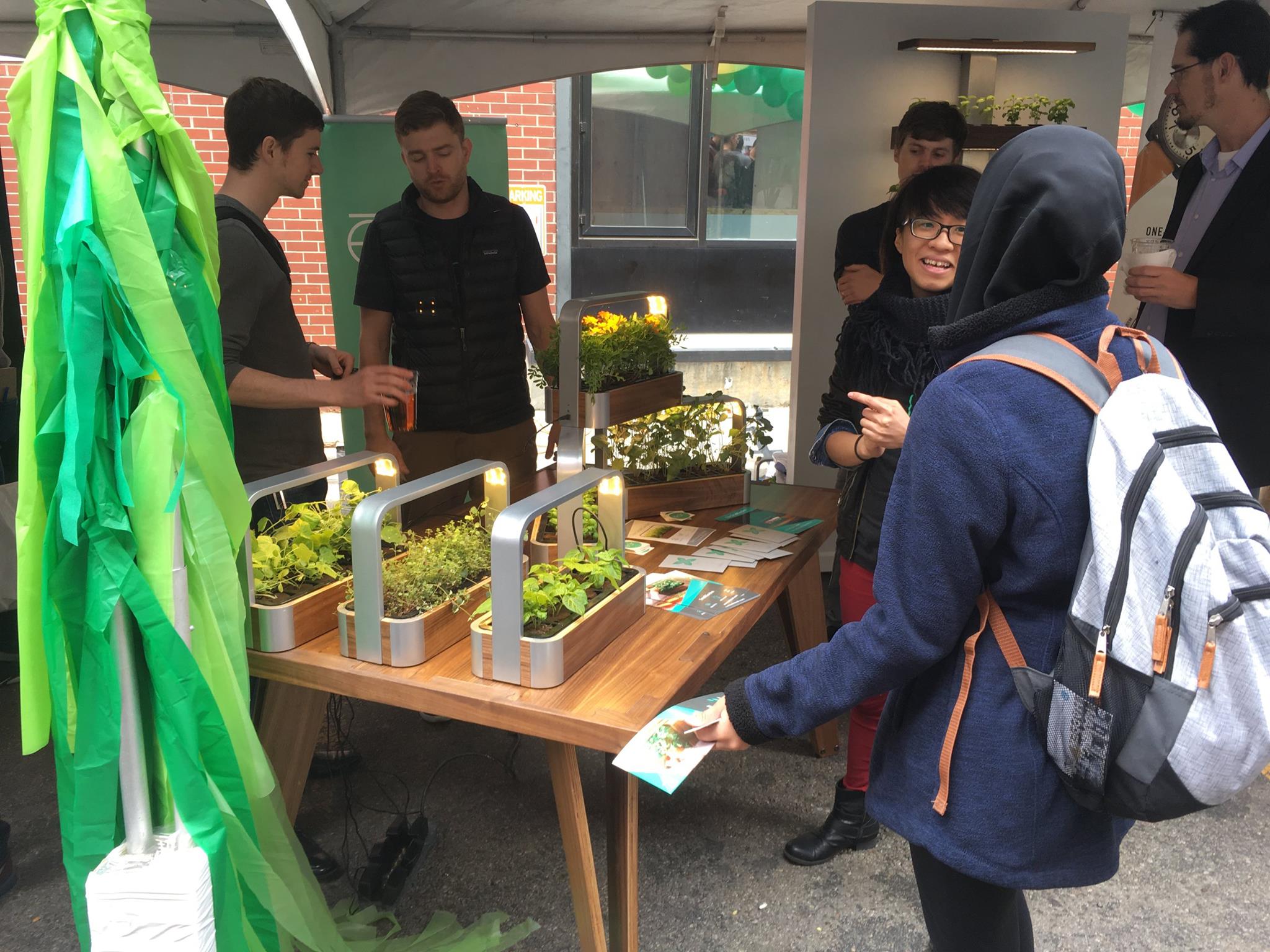
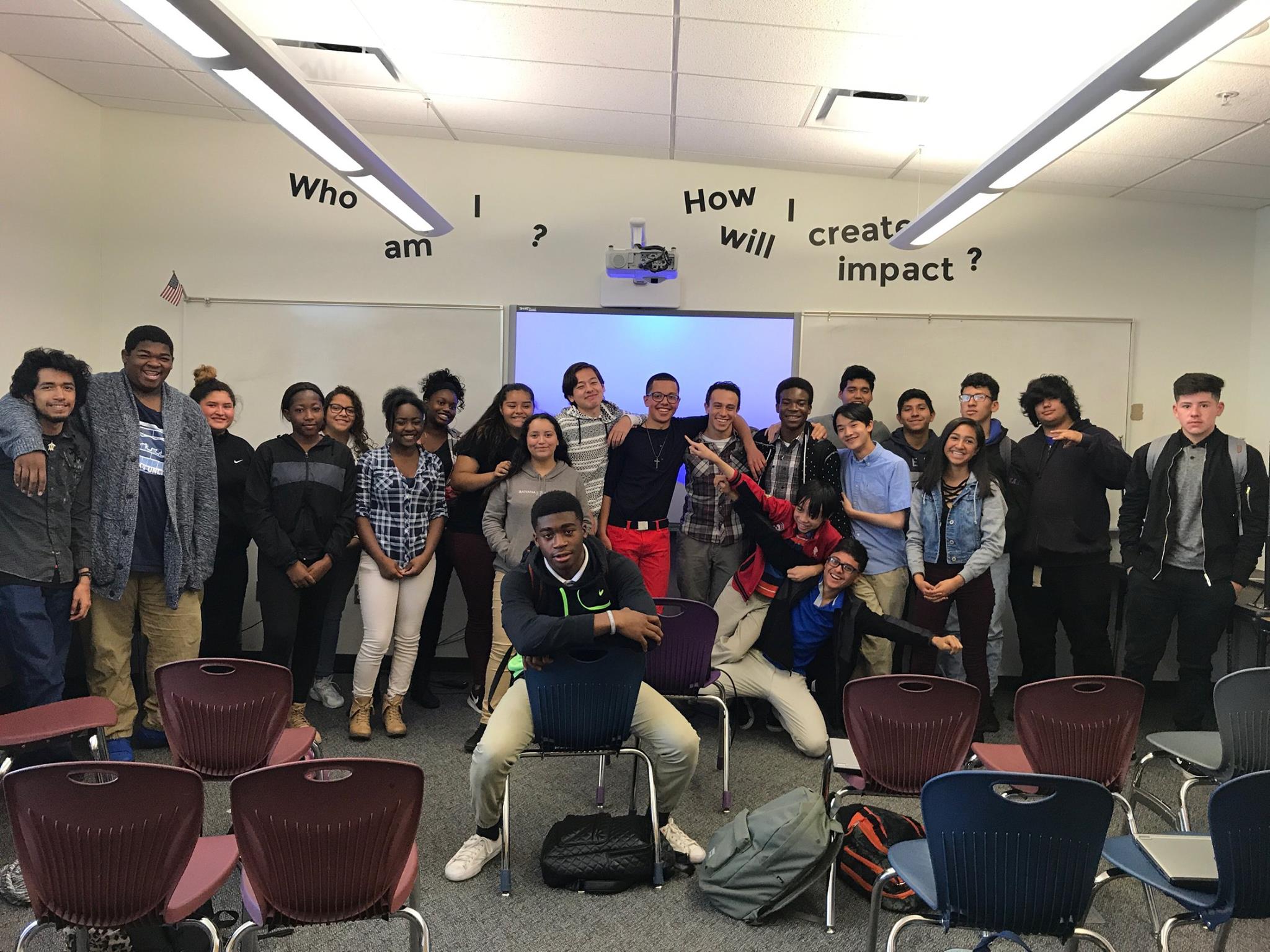
These are different methods for how we teach, so that the learning happens in any classrooms with any students. And re-defining really what we look at when we think about serving our students in school. And what we look at when we think about what academics means to us. And I really applaud you, I applaud your school, I applaud your leadership because this is what’s required if we’re going to do school better. And the reality is we’re not talking about doing school better inside a private school or certain charter schools that have the resources and the will. We’re talking of doing the school better for all kids.
Jeremy: I 100% I agree. I think that you’re right, it’s very much about shifting, you know, what is, I think, the role of school. Because let’s be honest, right? School and learning are two different things, and education and learning are different things. And we need to, I think, very much inspire young people to become life long winners, right? So that they’re continuing with learning throughout their life and continually diving in.
You know, because your why can fundamentally very much change throughout your life, but if you have the skills, where you can, you know, think critically, think deeply understand who you are, understand other people on the context within which you fit, and understand kind of where you want to go, then you can go ahead and constantly, I would say, re-invent yourself, which is, I think, what kids today are going to be asked to do multiple times kind of throughout their lives.
Doris: And so, you started with a pilot and then you did it a second time. I remember coming to the final presentations of your second entrepreneurship class. But what’s really interesting is what has happened since and how really school-wide change has happened in a great way at DSST. So, tell us a little bit about that.
Jeremy: Right. So, I mean, we have seen, I would say, the momentum just continue to grow. I would say the next, you know, big points along that journey is when we decided to take it now just from 12th grade but into the 9th grade and how are we actually taking this to a broad number of students. So, it’s not just, you know, 12 kids, but we’re talking now a whole grade level of students. And the intentional work that happens within our schools actually, were the staff team came together to say, “You know, do we want to actually change the schedule of our school to allow for an elective course like this..”
And ultimately those were some of the decisions that we made, and so we designed the entire schedule to go ahead and allow for and accommodate that. And then also working with the middle school team as well to bring it down into the 8th grade and 7th grade on the same campus, and the we’ve also scaled it to a 9th grade class at one of our other about other campuses. There’s a lot about the program that we do on top of it because we’ve had, I would say, really gone ahead and built up this very robust full kind of vertical model.
So today this far we have, you know, approximately 600 kids in our courses in our programs that’s now scaled within our network of 13 schools and as we look into the future we’re poised to continue to scale, and, I think, our current target is to scale to five additional high schools within our network. You know, serving approximately 1,400 kids within the next four years. And we currently have, you know, three additional people on the team and we’ll scale that to probably 10 in total, including myself, as we grow. And we continue to go ahead and build very robust partnerships, you know, both locally, nationally, and internationally, to allow our kids to, I would say, increasingly access this network of global changemakers, if you will.
So, I think, that’s one of the big things that is core for us, too, is we’re very interested in the global sustainability goals. And how do we actually bring people together to tackle real problems that are very big in scope and that matter? And I firmly believe that to do that, we actually have to connect people from across to globe to solve these problems. It’s not like some people from one area of the world will solve all these problems other people. It’s very much about this interconnectedness and authentically working together to collaborate, to build solutions to these very real, kind of, like, daunting problems.
And I believe that we have to actually start empowering young people to do that work now, today. And it’s not about, you know, reaching some point in your life where you’ve had a terminal degree that you can now contribute. But how do we give you skills to do that now? And how do we increasingly scale that across our network? But the reality is, that isn’t where we started that’s where we’ve come. And we’ve come that way in a pretty, I would say, a short period of time. But if you go back to the beginning, you know, it started with this after-school program, that then it went into the school day, very small but has grown increasingly large in a very short period of time. But, I think, it always comes back to this idea of dream big, start small, but most importantly start. And one of the little things that you can do along the way to go ahead and get there.
Doris: Exactly. And DSST is a very special school. Really what we’re talking about here is the story of what happens when the leadership of a school decides that we need to change the way we do school. And a leader like yours, like Bill, creates the conditions that allow a teacher like you to take risks and to himself experiment and to experiment with the school, and try things, different things, multiple times over that you don’t have any experience with, but that you have the confidence, can lead to something that makes school much more impactful and effective for the students.
And so, that’s what’s interesting about the story and while DSST and your school and you are such an exciting story. What’s really important about this story is that this is happening elsewhere, and it can happen everywhere. And what’s important is just start with a leadership that has the will to create the conditions for it to happen.
Jeremy: Yeah. So, I think, that’s true, and, I think, I’ve been fortunate to have the support of our network and board and everyone to go ahead and go on this journey, which I’m very thankful for. You know, that’s been a hallmark of our network, which is why I’ve continued to remain here, if you will, all these years. Because, I think, there’s a couple of things. One, you know, DSST is very much leading nationally, I would say, on this conversation around inclusivity and equity and pieces like that. And then, I think, there is also very much this humility of saying, and knowing that we don’t have everything figured out and every day we have to get better for our kids. And, I think, that becomes a part of everything that we do as a network, which has very much led to us taking this step of how to do we provide students with this critical skills that they’re going to need later in life on top of this academic foundation.
Doris: Yes, so, we are at an interesting time in education right now. Industry-wide educators understand..they really accept actually, they not just understand, they accept that what we’re doing, how we’re doing it is not helpful. They get it. But what they don’t have that they need is the “how?”
So, if I’m teaching five classes a day, whatever, inside a school, I need very well understand that my giving the worksheets and my giving the tests for a specific stuff and getting…I get that this is not the most hopeful thing for every single individual kid the room, but I don’t know how to do it differently. And as an industry, we need to create a completely different set of methods for the practice. And that’s really what I’m, you know, as you know very well, that’s what I’m working on. This is giving teachers inside classrooms the methods they need to create a completely different practice.
And every teacher like you, like others, every teacher, once they’re given what they need to try this out, this completely different, radically different way of constructing the learning experience and then actually executing it, which is what we call it instructional practice. Once they try that and they’re given what they need to try it, they’re designers, they’re artists, they’re architects, they will make it on their own, but we have to give people, give teachers the tools to completely and totally change the way they do school.
Jeremy: Yeah. I agree, and I think, you know, that’s where, you know, thankful to have randomly stumbled across you on the internet, if you will, you know, years ago fortuitously where I came across the workshop that you all were running because, I think, that has dramatically shaped and changed the path and You know, and, I think, a lot of people were probably very grateful to you. I know, I certainly am in the sense that, you know, I think, you’ve been a catalyst. And quite frankly, I think that’s what the best educators do is share, and what the best educators do is, you know, take and learn from others. There’s need for us to…As we’re trying to do all of this innovative work to, kind of, do it in silos and to do it packets, but we really should be taking and combining the best of what people are doing across this country because this is hard work. It’s really hard work and to be able to do without the people makes that certainly a ton easier.
Doris: Yeah. Every other industry has figured this out except education. We’re better together than alone. And that comes also into play when you’re trying to change what you do in a classroom, or you’re trying to change an entire school system. Jeremy, it’s been an absolute pleasure to talk to you.
Jeremy: Awesome. Well, thank you so much for having me, Doris. I really enjoyed our conversation, too.


